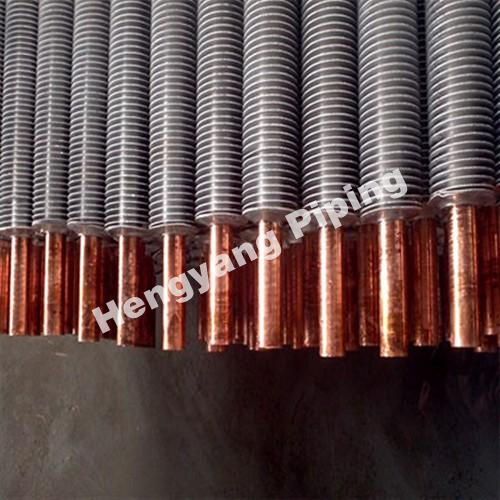What are the advantages of finned tube?
Finned tubes offer several advantages in various applications, thanks to their ability to enhance heat transfer efficiency. Here are some of the key advantages of using finned tubes:
1. Improved Heat Transfer: The primary advantage of finned tubes is their ability to significantly enhance heat transfer efficiency. By increasing the external surface area of the tube, fins enable more effective heat exchange between the fluid inside the tube and the surrounding medium, whether it's air, water, or another fluid. This results in quicker and more efficient heating or cooling processes.
2. Energy Efficiency: Because finned tubes improve heat transfer, they can contribute to energy efficiency in heating and cooling systems. Systems that use finned tubes require less energy to achieve the desired temperature, reducing energy consumption and operating costs.
3. Temperature Control: Finned tubes are instrumental in maintaining precise temperature control in various applications. They help achieve and maintain target temperatures more accurately and quickly, which is crucial in industries like HVAC, refrigeration, and process heating.
4. Compact Design: The enhanced heat transfer capability of low finned tubes allows for more compact and space-efficient heat exchangers and equipment. This is particularly valuable in applications where space is limited.

5. Versatility: Finned tubes can be used in a wide range of applications and industries, including air conditioning, refrigeration, power generation, chemical processing, and more. Their versatility makes them a preferred choice for many heat transfer tasks.
6. Condensation Prevention: In applications where condensation on the external surface of the tube can be problematic, finned tubes help maintain the tube's temperature above the dew point of the surrounding air, reducing or eliminating condensation issues.
7. Enhanced Heat Recovery: Finned tubes are often employed in heat recovery systems, where they help recover and repurpose waste heat. This not only saves energy but also reduces environmental impact and operating costs.
8. Durability: metal Finned tubes are typically constructed from materials that are corrosion-resistant and durable, ensuring a long service life even in harsh operating conditions.
9. Cost Savings: While there may be an initial investment in using finned tubes, the long-term benefits, including energy savings and reduced maintenance costs, often outweigh the initial expenditure.
10. Customization: Finned tubes can be customized to meet specific project requirements, including variations in fin design, material choices, and tube sizes. This flexibility allows engineers to tailor finned tubes to suit a wide range of applications.
In conclusion,Hengyang finned tubes play a crucial role in enhancing heat transfer efficiency across various industries and applications. Their ability to improve energy efficiency, temperature control, and compact design makes them an indispensable component in heating, cooling, and heat exchange systems, contributing to cost savings and operational efficiency.
150
0
0


Comments
All Comments (0)